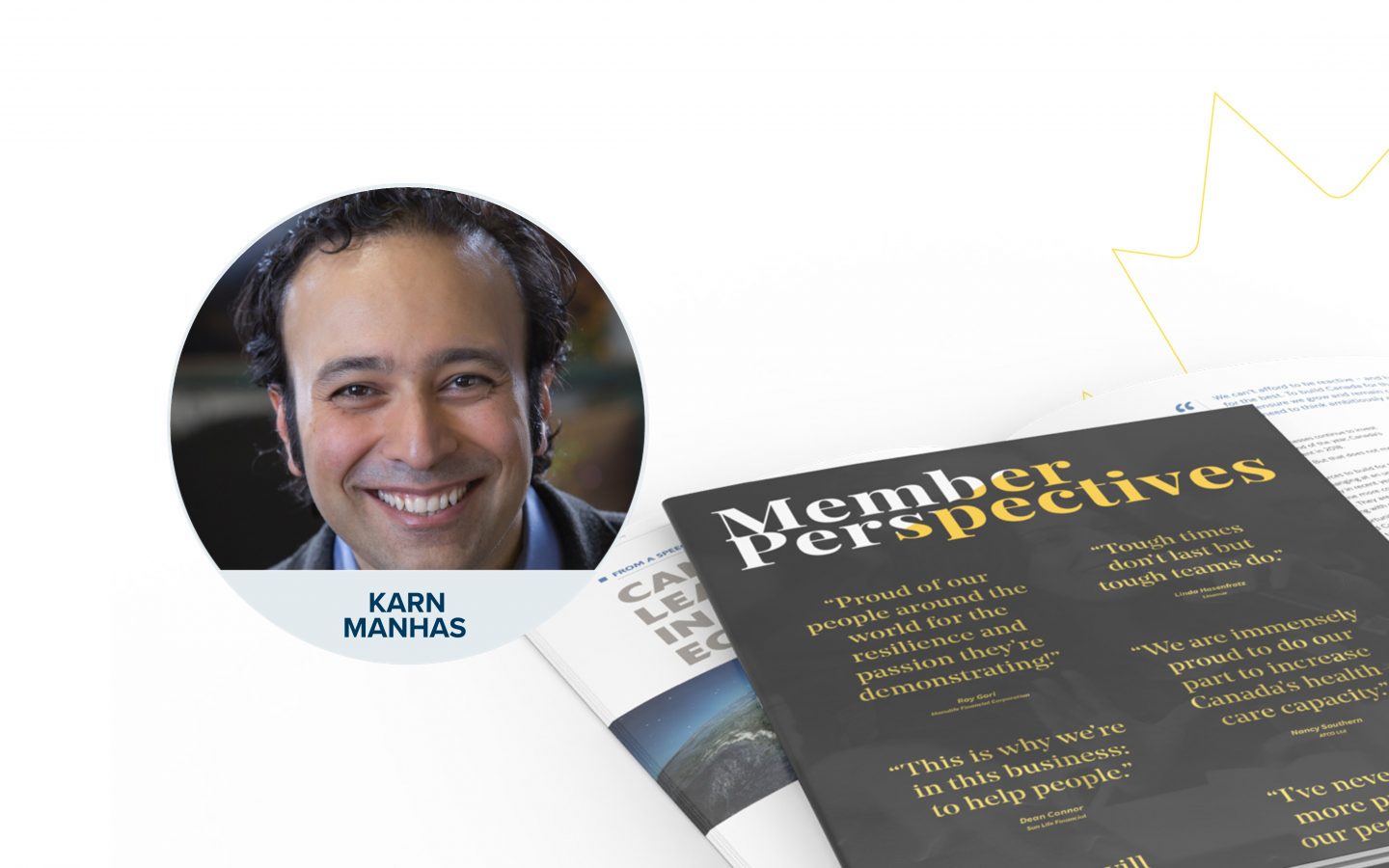Goodbye, Organic; Hello, ‘Regen-Certified’—Ready for the Newest Label on Store Shelves?
For many of us, the organic certification label has become a touchstone we look for to help us choose what’s good for us. But is it good enough?
Now that they’re spending more time at home, my young nieces have gotten into cooking and gardening. Just the other day, they called to grill me on pesticides in fruits and vegetables, and “the Dirty Dozen”—a list designed to generate awareness around pesticides in food. “Uncle Karn,” they asked, “how important is it to buy organic strawberries? What about bananas?”
This got me thinking. For many of us, the organic certification label has become a touchstone we look for to help us choose what’s good for us. Indeed, “organic” has influenced an entire generation of shoppers’ food choices.
But is it enough?
As important as the organic designation has been, it leaves a critical part of the agricultural puzzle unaddressed. We may know that our kale has been grown without certain synthetic chemicals. But how do we know if it’s been cultivated in a way that restores the planet, strengthens food security or fights climate change?
For many people, these questions are more important than ever. But to know the answers, we’d need a new label entirely, one that speaks to a farming philosophy that’s gaining widespread traction, exactly when it’s needed most: regenerative agriculture.
Regenerative Agriculture 101
So, what is it? Regenerative agriculture is an approach to farming that gives back to the land. Practices like cover crops, reduced tillage and diverse crop rotations are regenerative because they can take carbon out of the air and reinvest it back into the soil. The result is heartier soil, dense in nutrients. As the soil grows richer, crops grow healthier, boosting yields for farmers.
This stands in contrast to conventional farming methods, from monocropping to tilling, that strip the soil of the nutrients required to grow healthy plants. Farmers then must rely on inputs like pesticides and fertilizers to ensure crops survive. This system, which we’ve embraced for much of the last century, has now reached a point of diminishing returns, requiring ever more inputs simply to sustain yields.
But there’s another critical virtue to regenerative agriculture: Pulling carbon out of the air and into the soil is a powerful means of addressing climate change. Indeed, some studies suggest that farmland and rangelands could sequester over 600 billion tons of carbon from the atmosphere. The potential of regenerative agriculture is getting attention from leaders, like U.S. President Joe Biden and entrepreneurs like Elon Musk, as one solution for curbing the climate crisis.
Ultimately, regenerative agriculture aspires to be more than sustainable: The goal is to leave the earth better than we found it, setting in motion a virtuous cycle of healthier soil, healthier plants, healthier people and healthier ecosystems.
Jumpstarting the Regenerative Revolution
While the benefits of moving to regenerative agriculture practices are clear, awareness is just blossoming. And this is precisely where advocates can borrow from the organic playbook. After all, even 25 years ago, “organic” remained a niche distinction, understood and championed by a relative few. But by showing not just consumers but farmers, corporations and governments alike the upsides of embracing organic foods, these advocates jumpstarted a revolution.
Regenerative agriculture now needs to show these same stakeholders that the approach can be a win-win.
Consumers are already eager for change. The pandemic has driven demand for more sustainable, environmentally friendly and ethical products. One survey found that 83 percent of respondents take the environment into consideration when making purchases. By building awareness around regenerative agriculture as a tool to fight climate change, we can incentivize shoppers to look for regenerative foods the way they look for organic labels.
For farmers, meanwhile, regenerative agriculture promises real returns, minus some of the hurdles posed by organic farming. In the U.S., transitioning to organic requires a hefty upfront investment that many farmers can’t afford. Converting a farm to organic takes a minimum of three years. During that time, farmers often contend with steep losses that are only partly offset by higher market prices. But making the switch to regenerative pays dividends that only grow year-over-year as soil becomes healthier and more productive. A no-till farmer in Ohio, for example, earns a net of $500 more per acre than her peers who use conventional farming techniques.
For organic, the real turning point came with corporate buy in. Costco and Whole Foods were early leaders, but now nearly every grocery chain has organic options. The good news is that major companies are beginning to invest in regenerative farms. In 2019, General Mills, motivated by the business threat of climate change, committed to advance regenerative agricultural practices on one million acres of farmland by 2030. Meanwhile, Cargill has committed funds to promote regenerative systems, and food supplier Tate & Lyle has invested in a sustainable agriculture program.
Better soil, it turns out, is better business.
Earning the Regenerative Label
As more farmers adopt regenerative farming techniques, however, there’s confusion around how their products should be labeled. Some products grown through regenerative practices are labeled sustainable, some organic. A better option would be a clear labeling system that embraces the regenerative distinction. This would help customers identify what to buy, give farmers a guide and accelerate the regenerative movement as a whole.
Options are already emerging. Companies like Patagonia and Dr. Bronner’s have partnered with the organic pioneers at the Rodale Institute to develop the Regenerative Organic Certification (ROC) seal: an indication that a product promotes soil health and land management, animal welfare, and farmer and worker fairness. A bunch of grapes at the grocery store might earn the ROC standard if it’s grown using conservation tillage and was picked by farmworkers who were paid a living wage, for example.
While it’s a good start, this system uses the USDA organic certification system as a baseline—which, for all its virtues, is heavily proscriptive. By imposing a set of rules and requirements that dictate how farmers can farm, this system has proved a barrier to adoption in the past.
Instead, we should focus on a system that allows farmers to do what they do best and rewards them for outputs and outcomes, not for process. If their use of regenerative practices increases soil carbon, for example, they should qualify for the regenerative label. That way, farmers could employ the regenerative techniques most accessible and applicable in their context, be that conservation tillage, cover cropping or crop rotation, rather than having to satisfy a laundry list of costly rules.
This will hasten adoption and—as farmers see the benefits for themselves—lead to the wholesale embrace of healthier agricultural practices. Because regenerative agriculture encourages a virtuous cycle, over time, farmers would have less need for inputs like pesticides, fertilizers and antibiotics.
Indeed, this is the real power of regenerative agriculture: It creates its own forward momentum. Not only is it better for the planet, but—as soil health progressively improves—it yields better quality harvests at a better price. Much like electric car adoption is accelerating not only because vehicles are better for the planet but increasingly because they outperform and outprice competitors, so too regenerative agriculture represents a better model, whether the barometer is global health or farmers’ bottom lines. Just as most cars may one day be electric, so might all agriculture one day be regenerative.
In fact, by the time my nieces are grown, I hope their grocery trips won’t involve carefully scanning for a label. I look forward to the day where it’s a given that food is grown using the most economical, productive and healthy approach that leaves the planet better than we found it. Why would we have it any other way?











